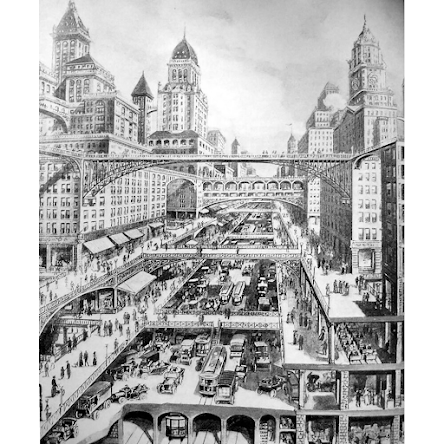Urban Congestion as a Hopeful Society or Dark Future
Rem Koolhaas' "Culture of Congestion" explores the evolution of New York City and its chaotic, expansive vertical growth. The seemingly utopian explorations of buildings that create new interactions for people through activities never experiences in urban landscapes. This utopian future highlights the growth of technology, but not the effect on the human senses.
The early 20th Century dreamed of the possibilities of where technology could take us. Cities were reimagined to have layered streets, separation of machine and pedestrians, and congested skylines. Could this evolution lead to a society hell bent on raising up technology and lowering humanity? Ridley Scott's scenery in Blade Runner presents the possibilities of this chaotic city growth, creating a society completely involved in the interior of mega structures. These dreams of a better future can become congested megastructures in a darker landscape. Is this Rem's intention in his "culture of congestion"?



Lucas, your blog is one of few, if any, I've come across that mentions this distinction: growth of technology/innovation versus the impact on human senses/mental health. I think its very important to call attention to this, as our economy certainly isn't designed to make this distinction. Koolhaas even described the elevator as a means to get closer to nature (air, views,) why would one want this closeness with nature if congestion was so great?
ReplyDelete